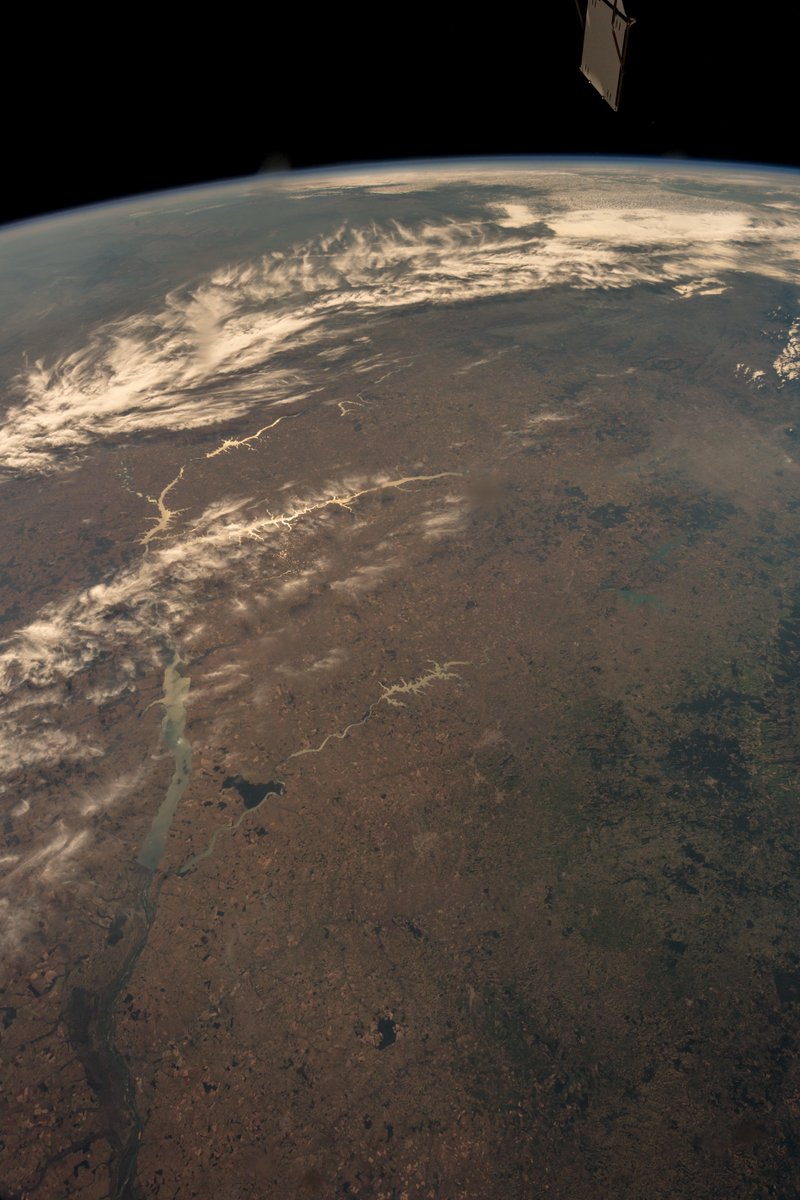[:ja]アレックス・ゲルスト宇宙飛行士がISSから撮影したアマゾン熱帯雨林の破壊の様子です。画像はブラジル西部です。

アマゾンの熱帯雨林の60%はブラジルにあり、面積は約550万平方kmと、地球上の熱帯雨林の半分に相当します。また、生態系に蓄積される炭素の10%程度に関係しているとされています。近年、主に牛の放牧地を作るために急速に森林が焼き払われるなど、自然破壊が顕著な状態にあります。
ブラジル、マナウス付近の地上の様子はこちらです。



参考文献: Alex Gerst’s Tweet
地球俯瞰画像を見る: LiVEARTH
[Earthview Wonders] No.789: Destruction of Amazon Rainforest
Astronaut Alex Gerst captured from ISS the destruction of Amazon Rainforest. The photo shows the area in the western Brazil.

The Amazon represents over half of the planet’s remaining rainforests, and comprises the largest and most biodiverse tract of tropical rainforest in the world, with an estimated 390 billion individual trees divided into 16,000 species. The majority of the forest is contained within Brazil, with 60% of the rainforest, and with minor amounts in other nations. Amazonian evergreen forests account for about 10% of the world’s terrestrial primary productivity and 10% of the carbon stores in ecosystems. Environmentalists are concerned about loss of biodiversity that will result from destruction of the forest, and also about the release of the carbon contained within the vegetation, which could accelerate global warming.
The local scenery on the ground is as follows.



Reference: Alex Gerst’s Tweet
See earthview photo gallery: LiVEARTH[:en][Earthview Wonders] No.789: Destruction of Amazon Rainforest
Astronaut Alex Gerst captured from ISS the destruction of Amazon Rainforest. The photo shows the area in the western Brazil.

The Amazon represents over half of the planet’s remaining rainforests, and comprises the largest and most biodiverse tract of tropical rainforest in the world, with an estimated 390 billion individual trees divided into 16,000 species. The majority of the forest is contained within Brazil, with 60% of the rainforest, and with minor amounts in other nations. Amazonian evergreen forests account for about 10% of the world’s terrestrial primary productivity and 10% of the carbon stores in ecosystems. Environmentalists are concerned about loss of biodiversity that will result from destruction of the forest, and also about the release of the carbon contained within the vegetation, which could accelerate global warming.
The local scenery on the ground is as follows.



Reference: Alex Gerst’s Tweet
See earthview photo gallery: LiVEARTH[:]